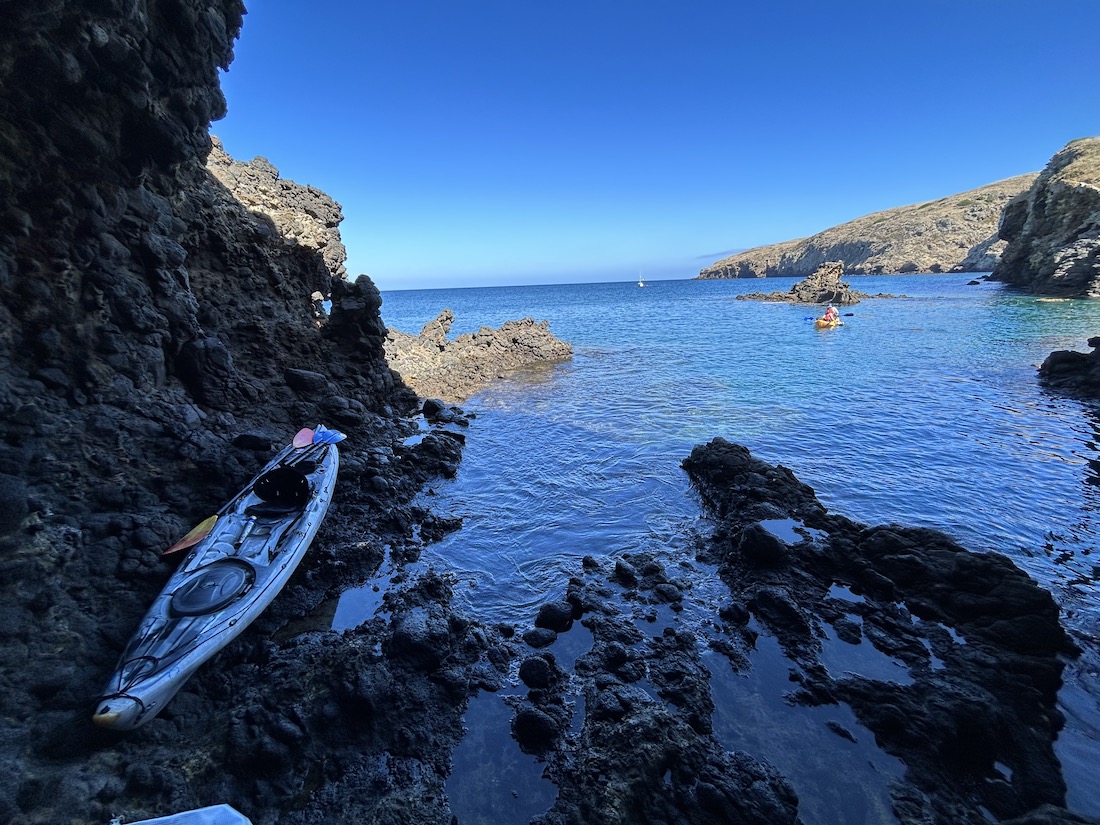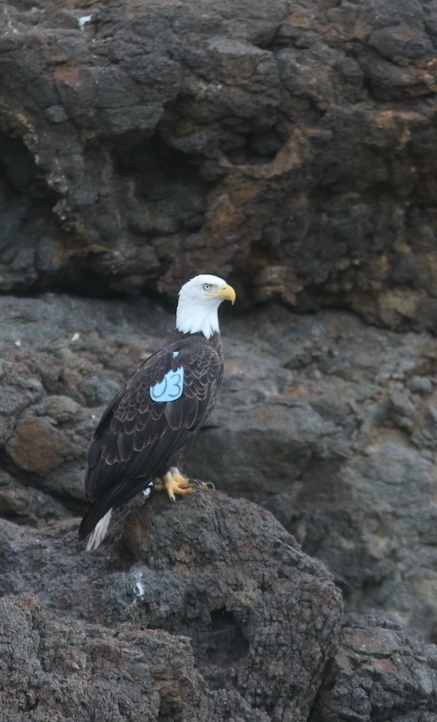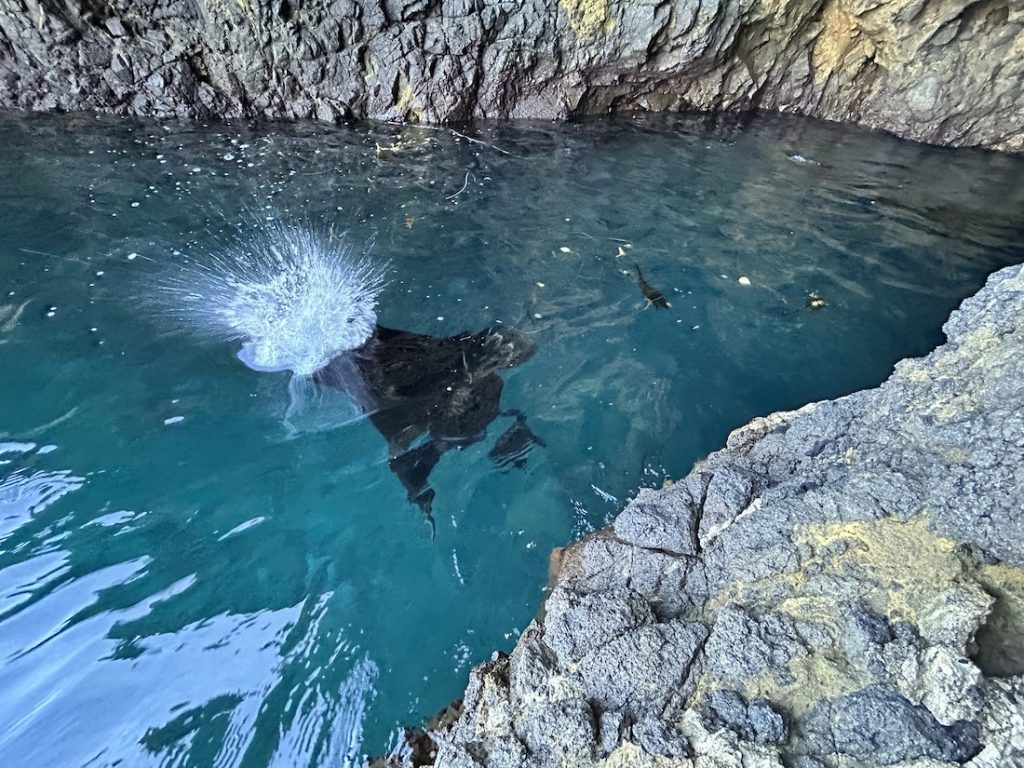Hugging the Island

It was a microcosm of the island biome, where multiple species benefited from the hard work of one marine mammal species and the help of a narrow, craggy sea cave battered by a surging, Southern Hemisphere swell.

I was kayaking back from an early evening surf session, and as I hugged the sheer cliffs of the southeast end of Santa Cruz Island, the sun had already set to the West behind the isle. As I paddled into Little Scorpion Anchorage, thick fog engulfed the island. Even in the dense mist, I caught a glimpse of a male bald eagle known as Theos perched maybe 10 feet above the swirling incoming high tide. The majestic, keystone species of the northern chain was perched just outside the entrance of a temperamental sea cave known as “Flatliner.” The grotto is narrow with a low-hanging ceiling but with a cool little beach in the rear of the dank grotto. It requires a lower tide and no swell for the best and easiest accessibility.
However, there wasn’t any wiggle room to paddle inside its tight, dark, confines. That same scenario carried over for the next three nights as late summer melded into early fall, the mild days of mid-September one of the best times to enjoy the Channel Islands National Park.
Several California sea lion bulls were doing what they do best when it comes to satisfying their voracious appetites. Working together, the burly pinnipeds were herding bait balls of top smelt into the entry of Flatliner, forcing the fish to jump out of the water and into the barnacle-encrusted rocks. At that point, the bull sea lions mashed their faces into the barnacles to gobble down as many fish as they could.
Several other species had to wait their turns as the bull sea lions dominated the buffet line. After the bald eagle flew off, Brandt’s cormorants and western gulls moved in. Spotted harbor seals, about half the size of the sea lions, lurked just on the periphery of the walls of the sea cave. Periodically, a harbor seal would sneak in and snatch a flopping top smelt before it could escape back into the cobalt blue water.
Just as it grew dark, the male bald eagle with the blue shoulder tags A-03 arrived again, chasing off all the gulls. Theos is about 7 years old now. He landed above Flatliner about 20 feet off the water. The bull sea lions continued rounding up the top smelt. As they did, A-03 dropped down, snatched a top smelt, and flew off. After he did, the gulls returned.

I left after that last exchange, one species transitioning for another. I paddled back in the dark thinking about all the natural wonders benefiting from that bait ball in that congested sea cave. I thought how smart the sea lions are using the topography of the island to their advantage.
The next morning, Theos flew over the pier and then soared eastward toward Flatliner. I went surfing again and returned late in the afternoon after the Island Packers ferry returned to the mainland. Scorpion Anchorage was quiet again as I hugged the towering cliffs, paddling back to Flatliner and Little Scorpion Anchorage.
It was a repeat of the day before, except this time I utilized the incoming tide and used the surge from the swell to lift me in my kayak up and onto a rocky shelf. From there, the bull sea lions were literally herding fish at my feet.
The tight confines of the sea cave kept things cozy for all species involved. That included a curious photographer, who was the beneficiary of two large exhales from a bull sea lion, salty sea lion snot and saliva gratefully showering me and my wide-angle lens.






